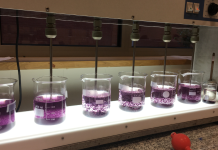Numerous industries utilize sandblasting as a common method for finishing, etching, or preparing surfaces. Sand that contains silica is frequently used as the blasting media. While silica has many uses, incorrect handling can be dangerous and lead to health problems. Long-term exposure can cause major respiratory conditions such as silicosis and lung cancer. Make sure that all safety procedures are followed correctly to reduce the hazards that employees experience. The most crucial safety measures to follow when utilizing silica for sandblasting are listed below.
Protection from Particulates
Workers must consider safety precautions including personal protection like using protective gear to save their organs from silica dust. Because silica is so tiny, it can easily enter the lungs and cause a wide range of lung-related conditions. Because they shield the wearer from particles that could splash into their eyes or lungs, full-face respirators are recommended. To find out more about safety precautions, read here by visiting the mentioned link.
Dust Monitoring
Enclosed sandblasting activities should include proper exhaust systems that can effectively control the release of airborne silica dust. Moreover, the utilization of water sprays or wet blasting techniques will go a long way in reducing dust formation. It is also important to ensure that the silica dust levels are kept below the permissible exposure limit through routine air quality checks.
Training and Awareness
Safety is important in sandblasting and training as well as awareness are important aspects in enhancing safety during the process. Workers need to be informed about the risks of silica exposure as well as how to put on safety equipment correctly. Reminding employees of the safety precautions to take when handling silica involves holding safety briefings and giving updates on safety protocols. Employers should also ensure that workers are aware of the emergency actions to take in case of exposure by accident.
Regular Health Monitoring
Silica dust is dangerous to the health of workers and therefore it is recommended that all workers exposed to the dust should undergo routine checkups to ensure early detection of any complications. Assessments of occupational health should entail lung function tests and chest X-rays to detect signs of silicosis or other respiratory diseases in the early stages. Ensuring that the workers can gain access to medical services and making sure that they understand the need for health checks is the way of protecting their health.
Substitution and Engineering Controls
In as much as this is the case, it can be highly advisable to use other materials that are less dangerous in place of silica sand where possible. The use of non-silica abrasive blasting media including glass beads, aluminum oxide, or any other similar material should be adopted. Moreover, the use of engineering controls including the use of automated blasting systems is also effective at reducing direct exposure of the workers to the silica dust.
Conclusion
Because silica has harmful effects on human health, special caution must be used while using it in sandblasting operations to prevent injury. Using the appropriate respiratory protection equipment, making sure there is enough ventilation, donning protective gear, getting the necessary training, going through routine physicals, and, when feasible, switching to safer goods are some of the steps that should be taken to reduce the hazards. By taking these precautions, companies can reduce the risk of silica-related illnesses among employees and foster a healthy work environment.










